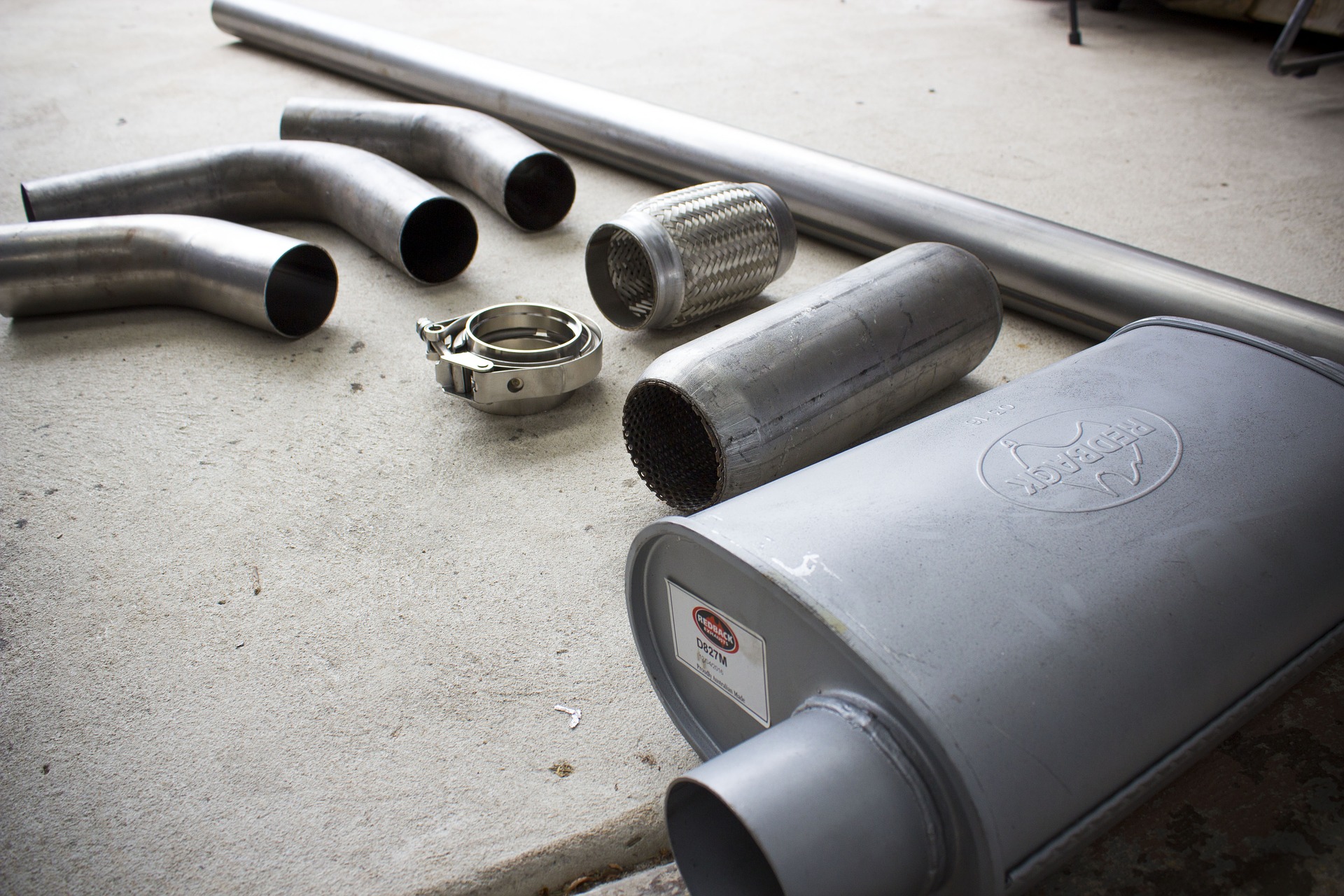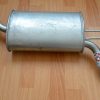One of the elements of the exhaust system is the silencer. It plays a very important role in the entire exhaust gas extraction process. Engine exhaust systems would not function well without this element. Therefore, to choose the appropriate silencer, which will meet all the standards in the form of appropriate sound intensity or engine performance parameters, please familiarize yourself with its specification. This knowledge will not only be useful for car repair shops that will be able to choose the right silencers.
Engine exhaust systems – construction types of silencers
Two types of muffler designs can be distinguished: the first one is the silencer roll construction. The housing has a round or oval cross-section. A silencer is rolled up and then joined along by rolling the formed overlap. The previously prepared elements are placed inside the silencer and the covers closing the ends of the casing are connected. Pipes are inserted through covers that are part of the silencer centre. They are welded to the housing covers.
The second one is a type of two-bay structure, which is more modern technology. It allows a better fitting of the muffler housing to the car floor plate, thanks to which the air flow resistance is lower. Two-bay dampers consist of two parts of the casing, made by stamping from a cut sheet or a steel strip. In the middle of one of them, baffles and perforated ducts are installed, which lead the exhaust gases. Due to the multi-stage process of creating this type of silencers, it is necessary to use many tools.
Silencers available on the domestic market should meet certain standards: UNECE 59 and local regulations.
Types of exhaust silencers that have the function of reducing noise
Absorption silencer
In absorption silencer the exhaust flows only through the perforated pipe and through the special openings have contact with the space. Filling with special damping wadding, which is made of steel wool or mineral glass wool. It impedes sudden increases and decreases in pressure due to its surface and inelasticity, which in turn suppresses the movement of particles and contributes to the release of heat. The absorption silencer suppresses sounds above 500 Hz. Its damping capabilities increase until the sounds reach frequencies above the value of 2500 Hz.
Reflective silencer
The silencer works on the principle of multiple reflections of the sound wave that moves with the exhaust. Losing some of the energy during rebound causes the wave attenuation. It is necessary to set several cross-sectional changes in order to make the effect optimal. This setting will cause a resonance phenomenon, i.e. the frequency of vibrations will coincide with the frequency of natural vibrations in the chamber, where the waves move. There are two types of reflective silencers:
- series resonator – resonant phenomena occur in the main exhaust line,
- bypass resonator – the phenomena occur in the branch pipe from the main duct, which leads the fumes.
Interference silencer
During a meeting of two or more vibrations, they overlap, which can be strengthened or extinguished. The vibrating stream of exhaust gases is divided into two streams. One moves with a shorter channel, the other one with a longer one. When the two streams meet, there is interference in the form of blanking.
Combined muffler
None of the previously mentioned silencers, suppresses sounds on all frequencies. That is why the created silencers have several methods of damping vibrations.

Engine exhaust systems – silencer damages
The silencer is not immortal or indestructible. Both inside and outside can be damaged by corrosion. Corrosion from the inside is caused by chemical condensate, which is acidic, mainly consisting of solutions of sulfuric acids, nitrous hydrochloric acid and their salts. In absorption silencers, the absorption mat absorbs condensate. In reflective and combined silencers, the condensate drops on the internal ducts of the silencer. Moving the car over unevenness, also affects the load of the muffler. Therefore, the type of steel that directly comes into contact with the condensate determines the lifetime of the silencer. The best choice will be stainless steel sheet or sheet coated with aluminium.
Remarks – assembly of the outlet system
- Even the smallest leak in the exhaust system affects the engine’s operation. All the more when it is near the engine. In case the car is equipped with a catalytic converter and oxygen sensor, leakage contributes to serious consequences, including: the catalyst is unable to remove toxic nitrogen oxides.
- The ingress of air prevents proper exhaust gas analysis.
- We treat sealing pastes as temporary repair of leakage.
- Before painting the outlet systems, the surface should be cleaned and degreased. Use only heat-resisting paints that can withstand temperatures of 800 degrees Celsius and more.
- Spare parts should be mounted using hose clamps. They should be properly mounted and selected.
- For better tightness of pipe connections, it is recommended to use a sealing paste.
- The system heats up during operation due to high temperature and can be extended up to 20 mm. When mounting and suspending the exhaust system, the rear muffler must be moved by this amount so that the pipe end does not hit the vehicle body.
